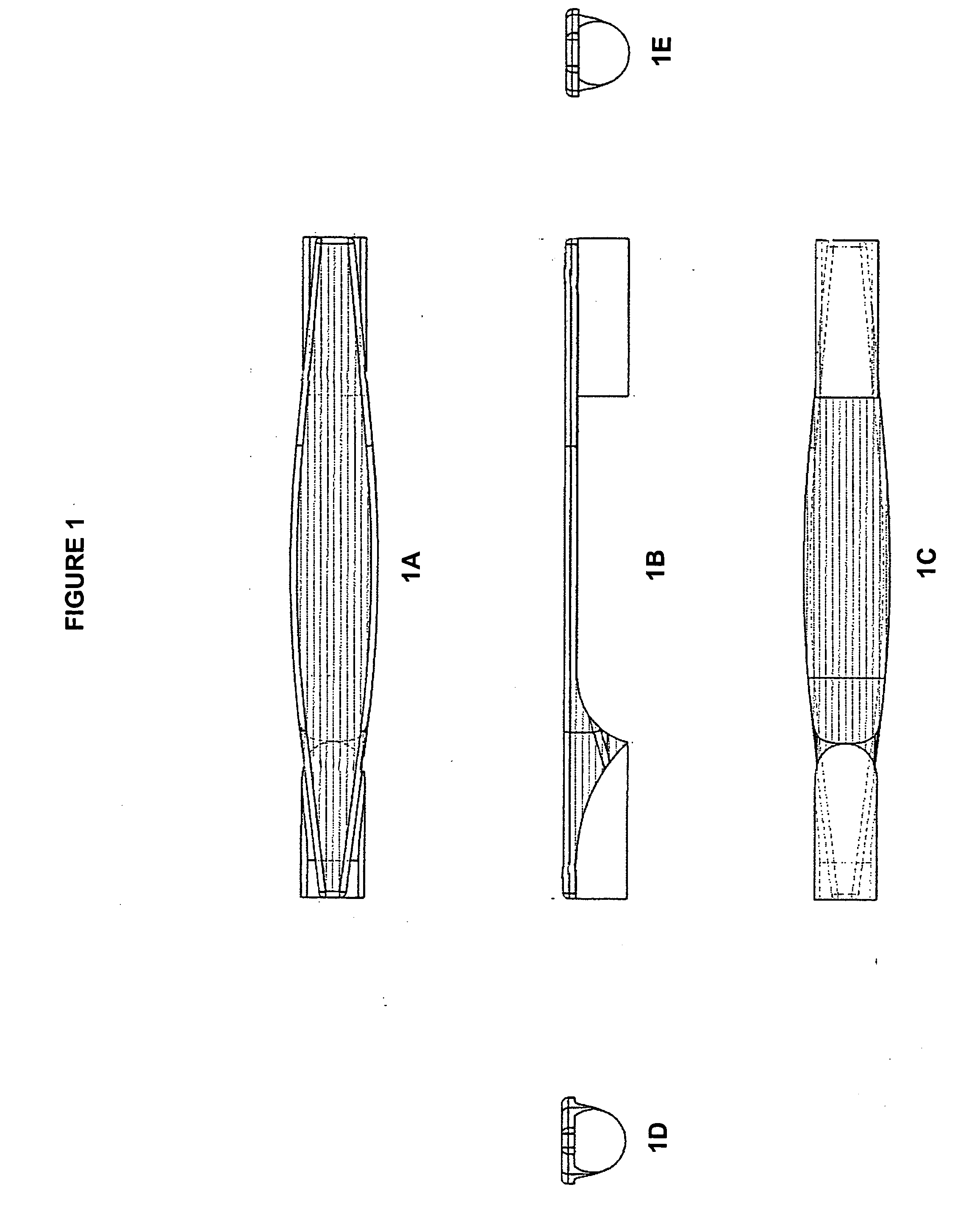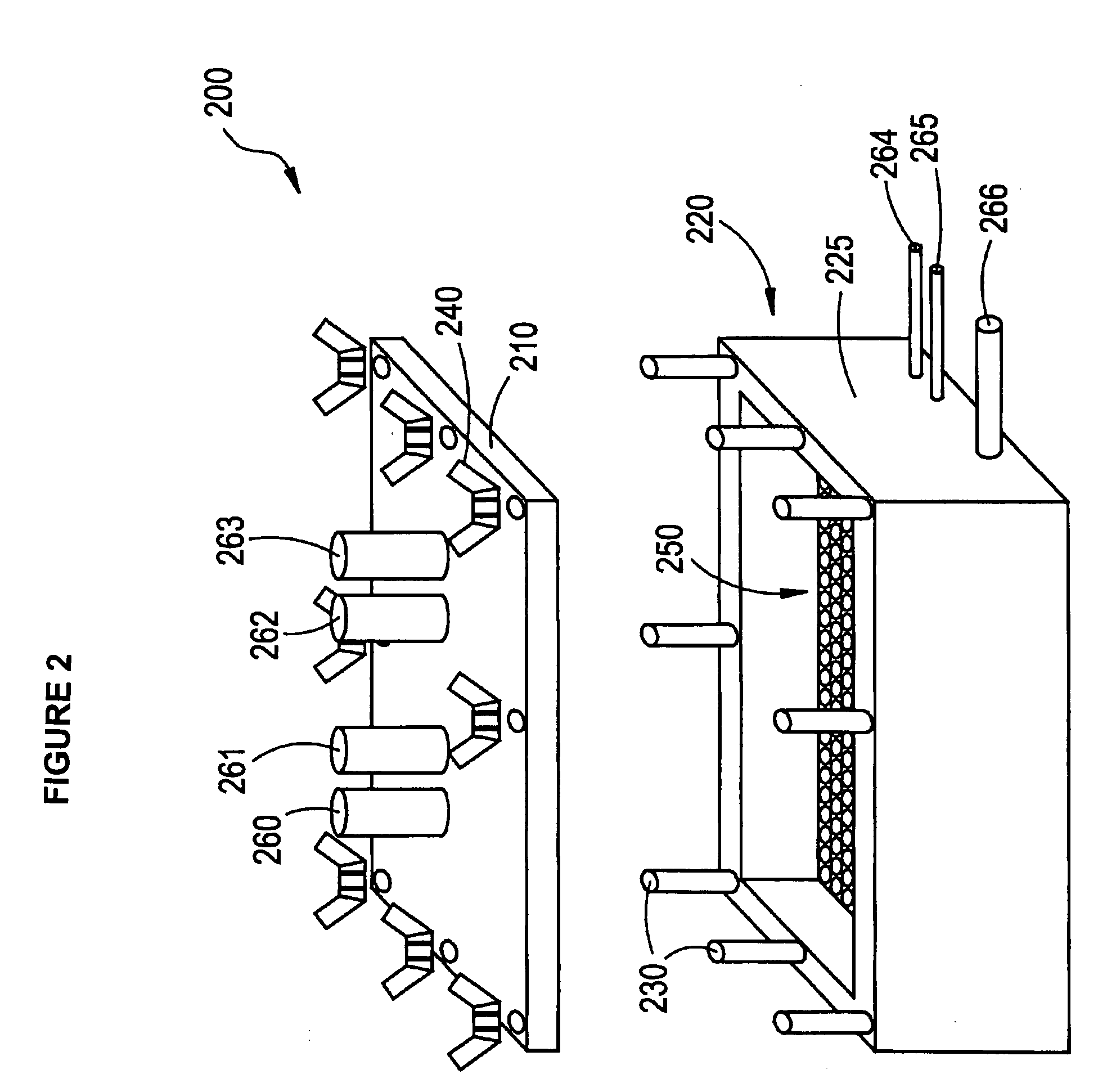Process and apparatus for treating implants comprising soft tissue
a technology of soft tissue and treatment equipment, which is applied in the direction of liquid cleaning, ligaments, liquid displacement, etc., can solve the problems of increasing the risk of toxic response, affecting the treatment effect, so as to reduce the damage attributable to cleaning agents, improve the treatment effect, and improve the treatment
- Summary
- Abstract
- Description
- Claims
- Application Information
AI Technical Summary
Benefits of technology
Problems solved by technology
Method used
Image
Examples
example 1
Evaluation of Cleaning Agents
[0124] Tendon samples (a soft tissue) were exposed to a series of chemicals alone or in combination in order to determine whether collagen damage resulted from the chemicals. These chemicals are cleaning agents used in conventional treatment processes. The effect of these chemicals on collagen structure is shown in Table 1, with a higher number indicating more denatured collagen. Numbers higher than the control are believed to be indicative of collagen damage attributable to the chemicals tested.
TABLE 1Percent Average (±St. Dev.) Denatured Collagen Levels (n = 8 for each regime)Perox.Perox. && detdetPerox. &SDS &IPOHCont.(loaded)(unloaded)SDSWaterTritonTritonSDSPerox.(@42° C.)Denatured8.006 + / −15.821 + / −24.034 + / −18.908 + / −10.44 + / −13.224 + / −10.889 + / −11.507 + / −20.477 + / −9.065 + / −Collagen0.812.634.930.881.510.141.682.390.170.35Levels
[0125] These results show that exposure of the tendon samples to hydrogen peroxide alone, or in combination with other c...
example 2
[0126] Exposure to peroxide is an effective sterilization method. However, as the time of peroxide exposure increases, the risk of tendon damage also increases. There is generally a degradation time, beyond which there is measurable degradation of the tissue (including collagen), and below which there is no measurable degradation. Tendon samples from three independent donors were exposed to hydrogen peroxide and analyzed for collagen integrity biochemically (as described above). The results are expressed as a ratio of denatured collagen levels present before and after treatment in matched donors. Expressing data in this manner allows one to generalize the effect of chemicals from multiple donors and multiple experiments. A sample representation of the results obtained is shown in Table 2.
TABLE 2ControlTreatedActual Denatured Collagen Levels10.02 + / − 1.6216.5 + / − 3.54Ratio (Treated / Control)1.001.67 + / − 0.42
[0127] This example confirmed the observation from Ex...
example 4
Alternating Alcohol and Peroxide Exposure
[0129] This example evaluates the effect of partitioning the time of peroxide contact with alcohol contact, to test the hypothesis that intermittent or partitioned peroxide contact for a duration may be less damaging to collagen, as compared to a continuous peroxide contact. While the inventors are not to be limited to their theories, another hypothesis is that the intermediate alcohol washes provide a protective effect by transiently fixing the tissue, thereby shielding the tissue matrix from peroxide degradation.
[0130] Soft tissue samples were exposed to peroxide either for a continuous treatment or for a partitioned treatment, in which peroxide exposure was partitioned by alcohol washes. In both the continuous treatment and the partitioned treatment, the cumulative time of peroxide exposure was the same. Additionally, two different cumulative times of exposure evaluated, one that was higher than the degradation time and one that was lowe...
PUM
| Property | Measurement | Unit |
|---|---|---|
| Temperature | aaaaa | aaaaa |
| Temperature | aaaaa | aaaaa |
| Fraction | aaaaa | aaaaa |
Abstract
Description
Claims
Application Information
 Login to View More
Login to View More - R&D
- Intellectual Property
- Life Sciences
- Materials
- Tech Scout
- Unparalleled Data Quality
- Higher Quality Content
- 60% Fewer Hallucinations
Browse by: Latest US Patents, China's latest patents, Technical Efficacy Thesaurus, Application Domain, Technology Topic, Popular Technical Reports.
© 2025 PatSnap. All rights reserved.Legal|Privacy policy|Modern Slavery Act Transparency Statement|Sitemap|About US| Contact US: help@patsnap.com



